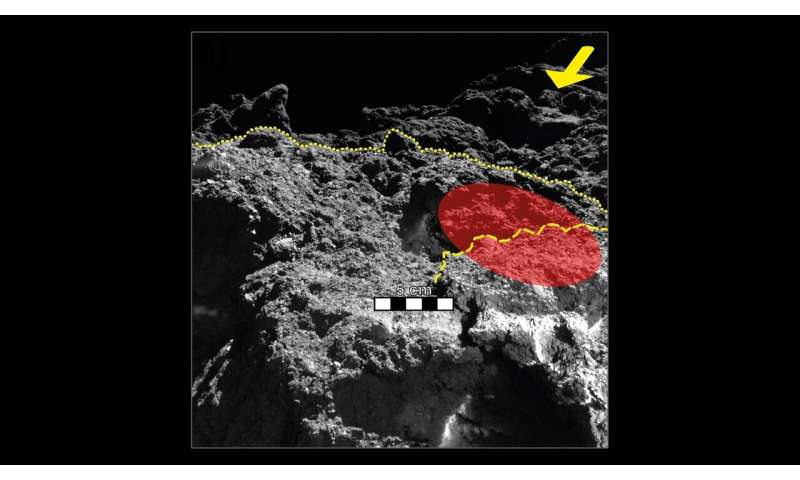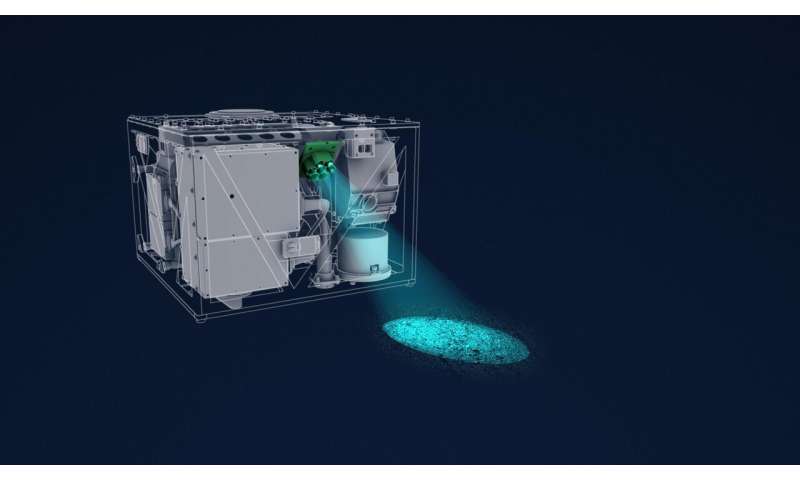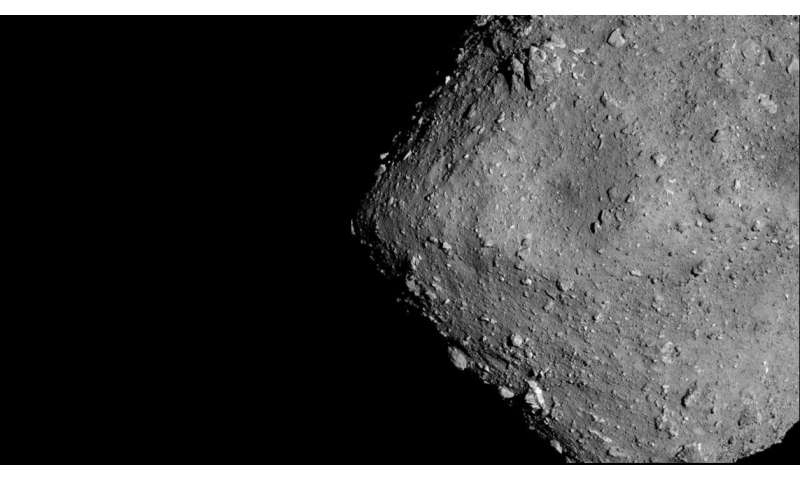Asteroid Ryugu likely link in planetary formation
Thermal behavior reveals density
This investigation of the global properties of Ryugu confirms and complements the findings of the landing environment on Ryugu obtained by the German-French Mobile Asteroid Surface SCOuT (MASCOT) lander during the Hayabusa2 mission. "Fragile, highly porous asteroids like Ryugu are probably the link in the evolution of cosmic dust into massive celestial bodies," says Matthias Grott from the DLR Institute of Planetary Research, one of the authors of the current Nature publication. "This closes a gap in our understanding of planetary formation, as we have hardly ever been able to detect such material in meteorites found on Earth."
In autumn 2018, the scientists working with first author Tatsuaki Okada of the Japanese space agency JAXA analyzed the asteroid's surface temperature in several series of measurements performed with the Thermal Infrared Imager (TIR) on board Hayabusa2. These measurements were made in the 8 to 12 micrometer wavelength range during day and night cycles. In the process, they discovered that, with very few exceptions, the surface heats up very quickly when exposed to sunlight. "The rapid warming after sunrise, from approximately minus 43 degrees Celsius to plus 27 degrees Celsius suggests that the constituent pieces of the asteroid have both low density and high porosity," explains Grott. About 1% of the boulders on the surface were colder and more similar to the meteorites found on Earth. "These could be more massive fragments from the interior of an original parent body, or they may have come from other sources and fallen onto Ryugu," adds Jörn Helbert from the DLR Institute of Planetary Research, who is also an author of the current Nature publication.

From planetesimals to planets
The fragile porous structure of C-type asteroids might be similar to that of planetesimals, which formed in the primordial solar nebula and accreted during numerous collisions to form planets. Most of the collapsing mass of the pre-solar cloud of gas and dust accumulated in the young sun. When a critical mass was reached, the heat-generating process of nuclear fusion began in its core.
The remaining dust, ice and gas accumulated in a rotating accretion disk around the newly formed star. Through the effects of gravity, the first planetary embryos or planetesimals were formed in this disc approximately 4.5 billion years ago. The planets and their moons formed from these planetesimals after a comparatively short period of perhaps only 10 million years. Many minor bodies—asteroids and comets—remained. These were unable to agglomerate to form additional planets due to gravitational disturbances, particularly those caused by Jupiter—by far the largest and most massive planet.
However, the processes that took place during the early history of the solar system are not yet fully understood. Many theories are based on models and have not yet been confirmed by observations, partly because traces from these early times are rare. "Research on the subject is therefore primarily dependent on extraterrestrial matter, which reaches Earth from the depths of the solar system in the form of meteorites," explains Helbert. It contains components from the time when the sun and planets were formed. "In addition, we need missions such as Hayabusa2 to visit the minor bodies that formed during the early stages of the solar system in order to confirm, supplement or—with appropriate observations—refute the models."

A rock like many on Ryugu
In the summer of 2019, results from the MASCOT lander mission showed that its landing site on Ryugu was mainly populated by large, highly porous and fragile boulders. "The published results are a confirmation of the results from the studies by the DLR radiometer MARA on MASCOT," said Matthias Grott, the Principal Investigator for MARA. "It has now been shown that the rock analysed by MARA is typical for the entire surface of the asteroid. This also confirms that fragments of the common C-type asteroids like Ryugu probably break up easily due to low internal strength when entering Earth's atmosphere."
On 3 October 2018, MASCOT landed on Ryugu in free fall at walking pace. Upon touchdown, it "bounced" several meters further before the approximately 10-kilogram experiment package came to a halt. MASCOT moved on the surface with the help of a rotating swing arm. This made it possible to turn MASCOT on its "right" side, and even perform jumps on the asteroid's surface due to Ryugu's low gravitational attraction. In total, MASCOT performed experiments on Ryugu for approximately 17 hours.
Samples from asteroid Ryugu on their way to Earth
Hayabusa2 mapped the asteroid from orbit at high resolution, and later acquired samples of the primordial body from two landing sites. These are currently sealed in a transport capsule and are traveling to Earth with the spacecraft. The capsule is scheduled to land in Australia at the end of 2020. So far, the researchers assume that Ryugu's material is chemically similar to that of chondritic meteorites, which are also found on Earth. Chondrules are small, millimeter-sized spheres of rock, which formed in the primordial solar nebula 4.5 billion years ago and are considered to be the building blocks of planetary formation.
So far, however, scientists cannot rule out the possibility that they are made of carbon-rich material, such as that found on comet 67P/ Churyumov-Gerasimenko as part of ESA's Rosetta mission with the DLR-operated Philae lander. Analyses of the samples from Ryugu, some of which will be carried out at DLR, are eagerly awaited. "It is precisely for this task—and of course for future missions such as the Japanese "Martian Moons eXploration' (MMX) mission, in which extraterrestrial samples will be brought to Earth—that we at DLR's Institute of Planetary Research in Berlin began setting up the Sample Analysis Laboratory (SAL) last year," says Helbert. The MMX mission, in which DLR is participating, will fly to the Martian moons Phobos and Deimos in 2024 and bring samples from the asteroid-sized moons to Earth in 2029. A mobile German-French rover will also be part of the MMX mission.Small fragments of carbon-rich asteroids too fragile to survive atmospheric entry
More information: Tatsuaki Okada et al. Highly porous nature of a primitive asteroid revealed by thermal imaging, Nature (2020). DOI: 10.1038/s41586-020-2102-6

No comments:
Post a Comment